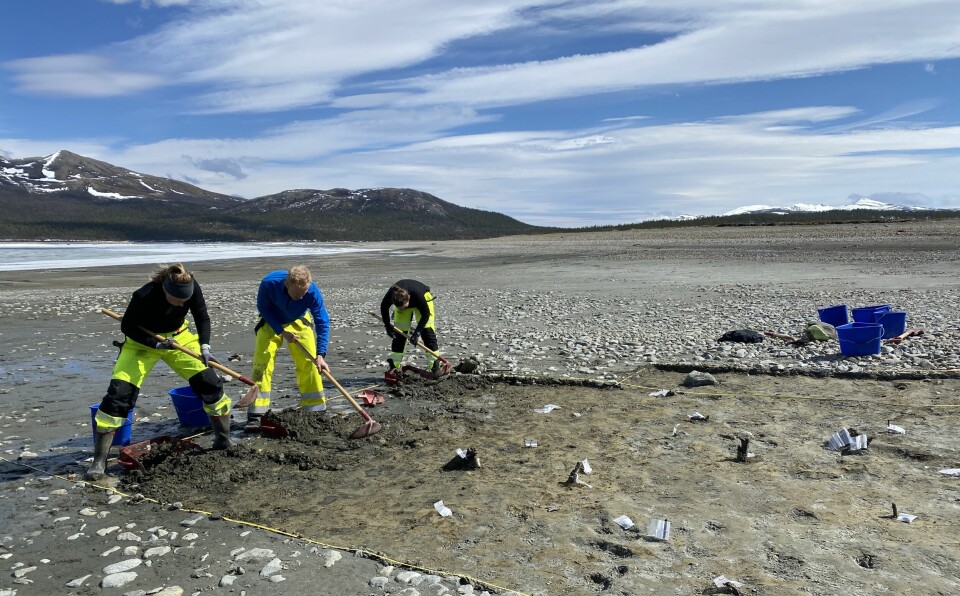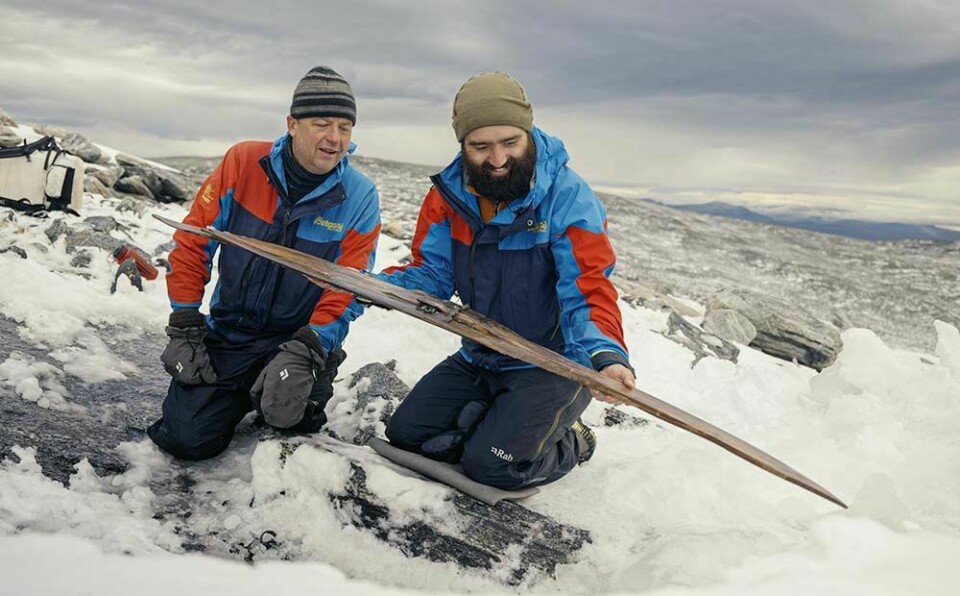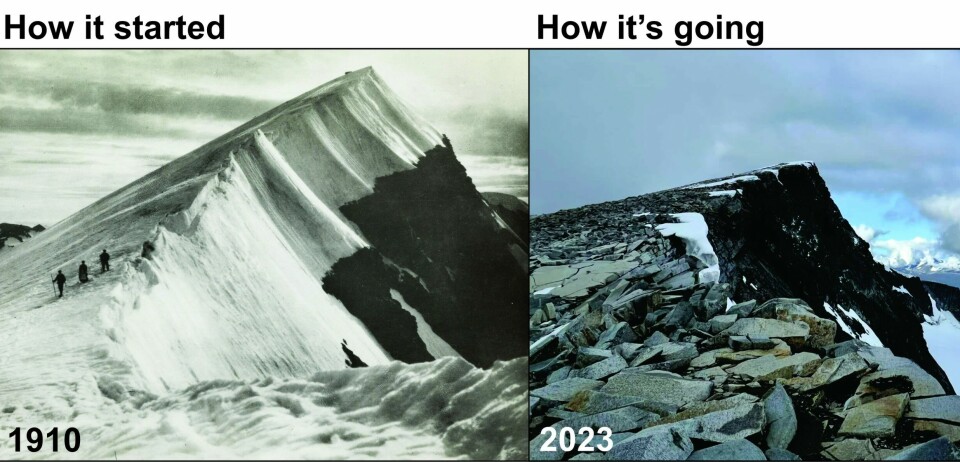
Glacial archaeologist on melting ice in the mountains: "It’s absolutely extreme"
The dramatic backdrop to spectacular archaeological finds in the Norwegian mountains is that the ice is melting, rapidly. This year's glacial archaeological season in the mountains is now underway.
“It's sad to see the landscape changing so much”, says Espen Finstad.
The experienced glacial archaeologist is co-director of the Secrets of the Ice safeguarding programme in Innlandet County Municipality in Norway.
Since 2006, Finstad has done fieldwork in mountain areas like Jotunheimen and Breheimen and found spectacular things from the past that melt out of the ice. But finding Norway's oldest piece of clothing and Norway's oldest shoe due to these conditions is bittersweet.
“I had never imagined such quick changes, and that so much of the ice would melt. It’s absolutely extreme.”
Usually, the archaeologists in Secrets of the Ice share enthusiastic posts on social media about everything they find in the mountains. But yesterday it was the loss of an ice patch that was given attention. A comparison of Glittertinden from 1910 and 2023 shows how what was once the highest mountain in Scandinavia, has had to take second place due to loss of its ice patch.
"Glittertinden provides a glimpse into a future where the ice in our mountains will be gone. It will be a very different world...”, the archaeologists write.
14 per cent less glaciers
A comprehensive survey of glaciers in Norway last year, carried out by The Norwegian Water Resources and Energy Directorate (NVE), found that glaciers all over the country are shrinking. The total amount of glacial areas had decreased by 14 per cent since the previous survey which was based on satellite images from 1999-2006. 20 glaciers in northern Norway have completely disappeared.
The melting of glaciers has increased steadily since 2000, researcher Liss Marie Andreassen from NVE told NRK (link in Norwegian).
“There are clearly big changes when we are out measuring now”, Andreassen said.
According to other calculations, Scandinavia will lose 60-80 per cent of its ice before the year 2100, even without further warming.
Surveying locations never visited before
When summer has melted snow and ice, and autumn is about to arrive, the glacial archaeologists have a small window during which they can go up in the mountains and do fieldwork.
This year's trip was first postponed by the extreme weather Hans. Heavy rainfall caused flooding and landslides in Southern Norway in August.
“We were delayed for a few days and had to make a lot of detours due to landslides”, says Finstad.
“In the mountains, there is permafrost that binds things together in a different way, but there are loose masses here too, and the ground becomes waterlogged. Things become much more unstable in the high mountains as well when there is so much rainfall.”
But the archaeologists made it up in the end, to visit new places that they have never surveyed before.
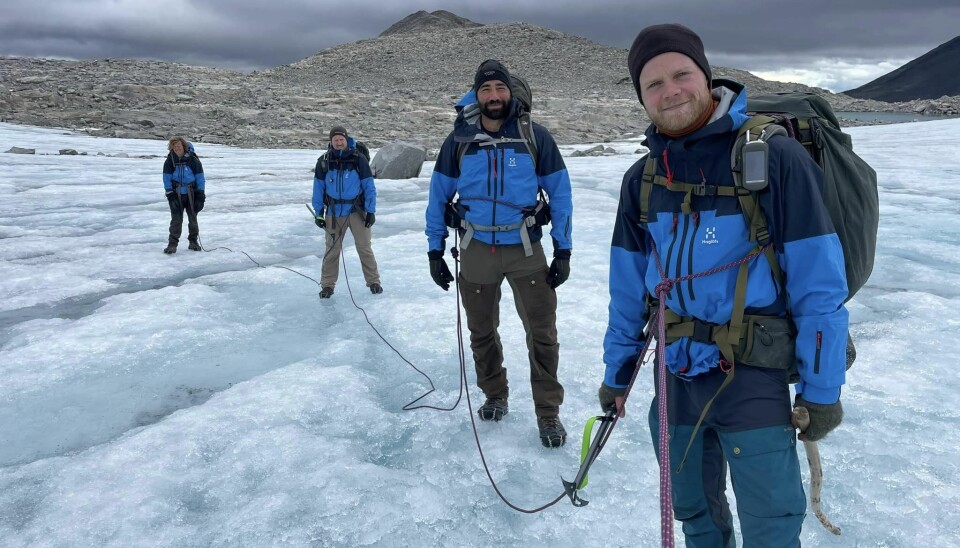
Unfortunately, there weren’t really any finds here. But not finding anything is also interesting, Finstad assures.
“We have become much wiser about what we can expect and are very satisfied with that. We didn't expect to find locations with abundant discoveries anyways. This is the start of an exploration that will last several years”, he says.
So far, the glacial archaeologists have logged around 70 places with finds in Innlandet municipality. But there are 150 more locations they want to check out.
“This year we have begun to systematically enter areas where we have not been before”, Finstad says.
“We will gradually check these areas out over the next few years, to clarify that there are not lots of finds lying around that we have not secured yet.”
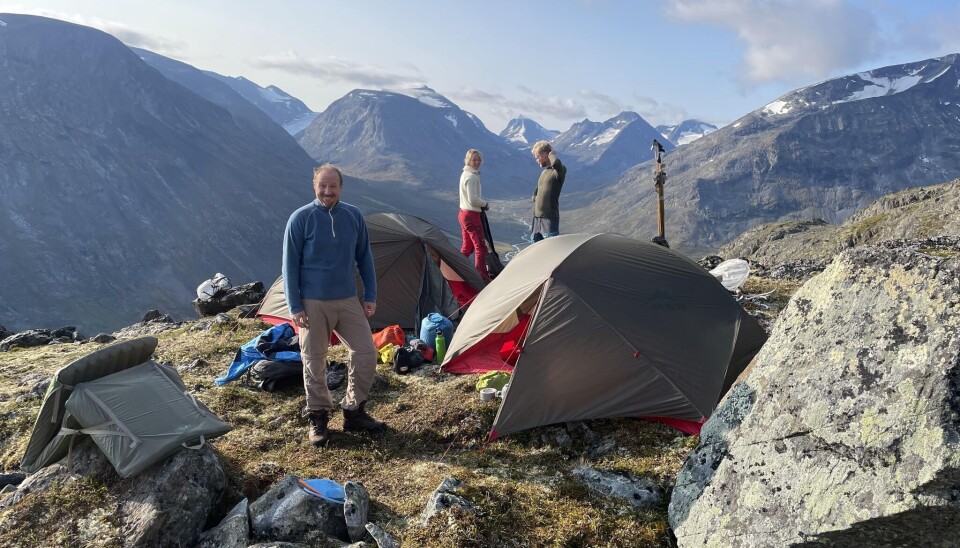
Hundreds of caring sticks and fences
Towards the end of last week, field work took place at a familiar location. Four days on the Styggebreen Glacier yielded hundreds of finds – mostly scaring sticks. Such sticks, which had a flag attached to the top, were used to manipulate reindeer to move in the desired direction.
“They have put up fences and scaring sticks here with exceptionally large flags”, says Finstad.
The archaeologists believe the purpose was to prevent the animals from moving through a passage in the mountain.
“It looks like they have wanted to block the animals pathway to keep them around the northern part of the mountain. They have put a lot of energy into keeping the animals from moving out of the area”, Finstad says.
Dating of the sticks and flags will tell whether people have been here for a few hundred or a few thousand years.
In the video below, one of the Secrets of the Ice archaeologists show one of the unusually large scaring stick flags found at the Styggebreen glacier. They estimate it to be 1500 years old.
Great expectations for Lendbreen
This week, fieldwork shifts to Lendbreen. This is the ice patch where several of the most amazing discoveries have been made over the years.
“In a way, Lendbreen is an extreme location, here we have found Norway's oldest piece of clothing, dead horses, a dog, arrows, leather shoes - there has been hunting and travelling here and God knows what cannot be found here, Finstad says.
“We were there just to check a week and a half ago, and there is a lot of melting in some areas, so we have high expectations. There will obviously be a lot to do there this year”, Finstad says.
A few decades to get the job done
It all started in 2006, a year of massive melting in the mountain that resulted in a truly unique discovery. Norway's oldest shoe, a 3,500-year-old shoe from the Bronze Age, was found by mountain hiker and hobby archaeologist Reidar Marstein in Jotunheimen.
“That’s when we pressed the red button”, Finstad says.
“We have to get out there now. So we went up into the mountains in several places that autumn and saw that there were extremely many finds everywhere. Then we got the county and the Museum of Cultural History on board, and agreed that we now have a few decades to make an effort and work on this.”
One of the places with finds is Juvfonne at the foot of Galdhøpiggen in Jotunheimen.
“Here the front has retreated between 50 and 70 metres, and the ice is less than half the volume that it was in 2006”, says Finstad.
“Lendbreen may have disappeared even more. These are two examples of ice patches that we have followed over time. So the norm is that this is happening extremely quickly. It varies somewhat, of course. But the trend that we have seen is clear.”
------








